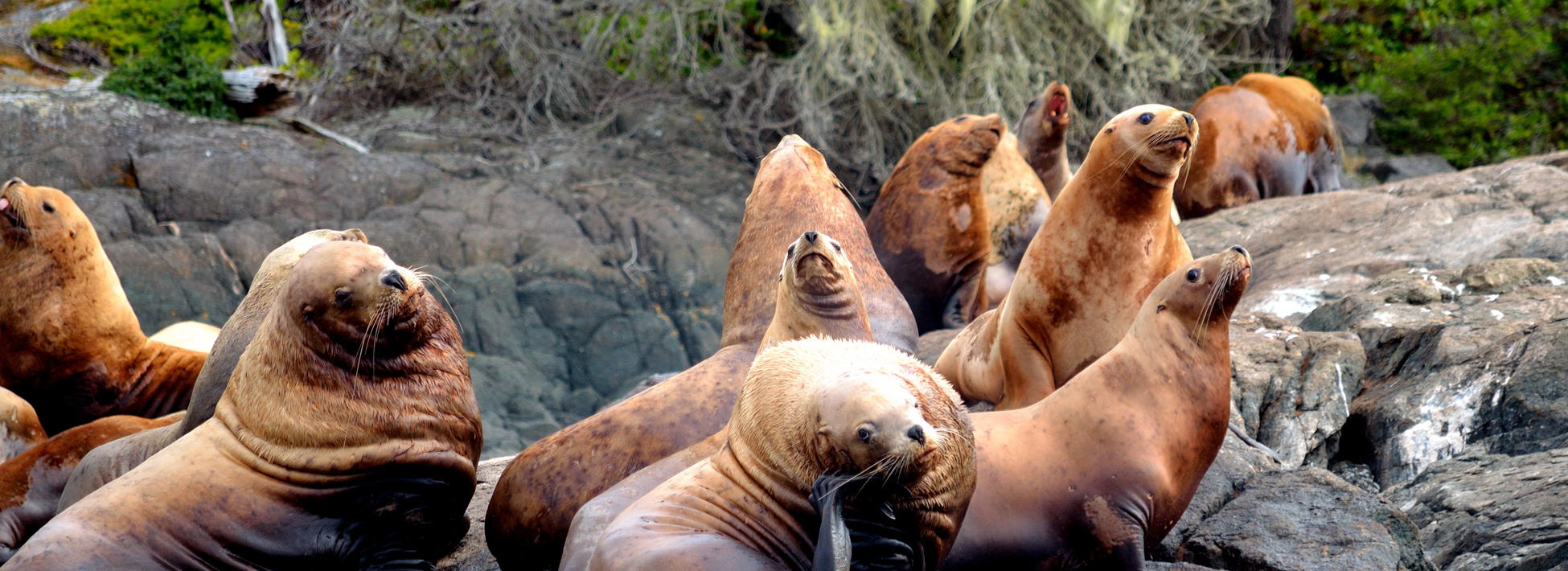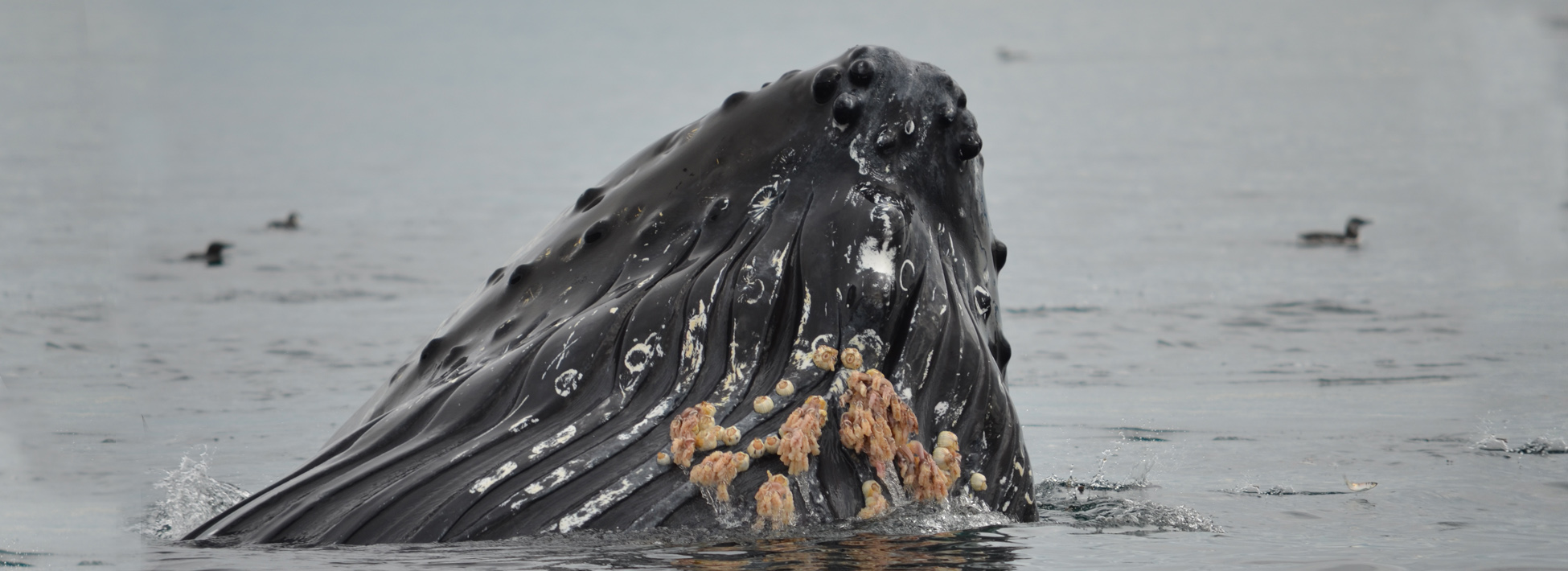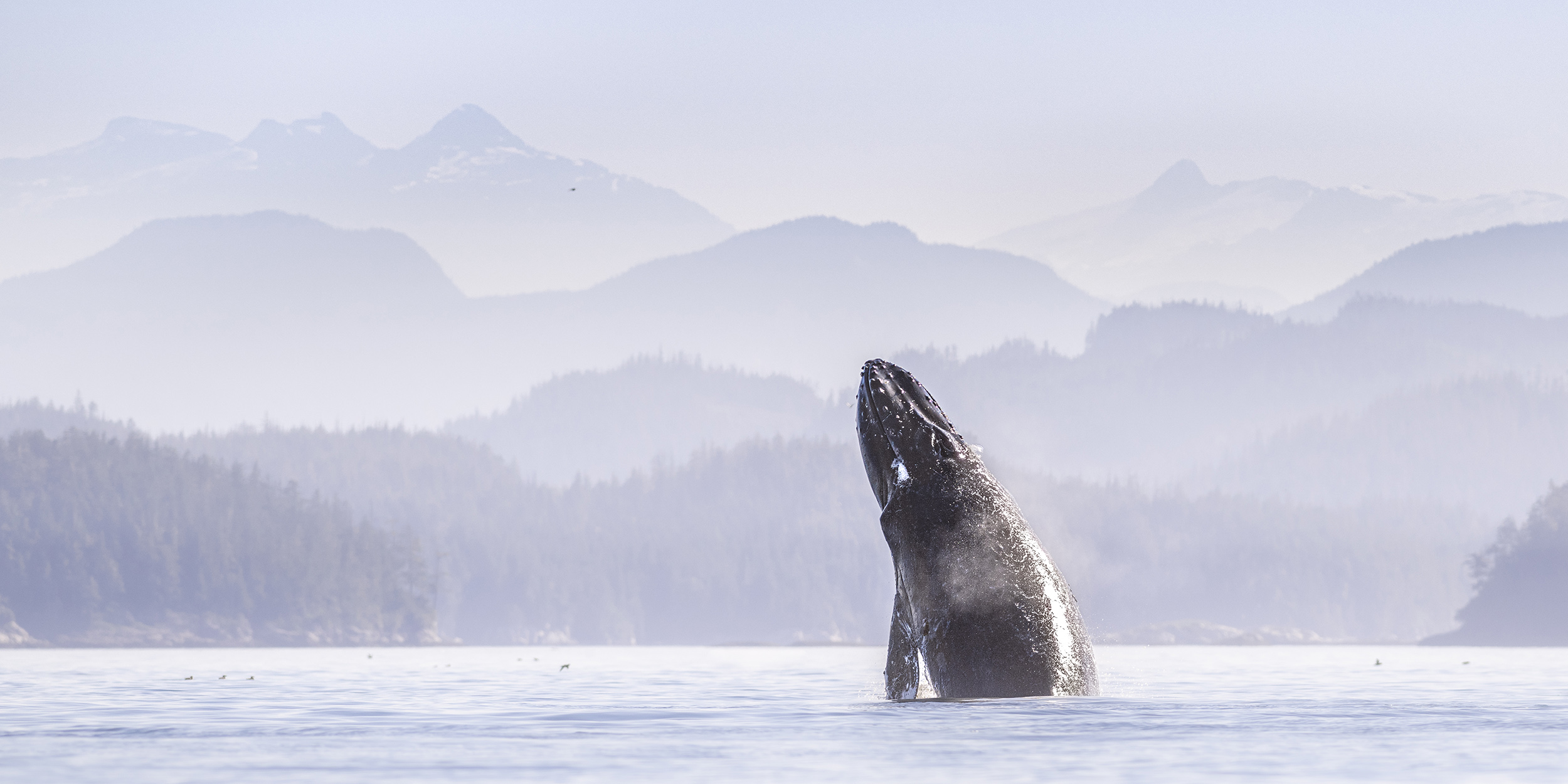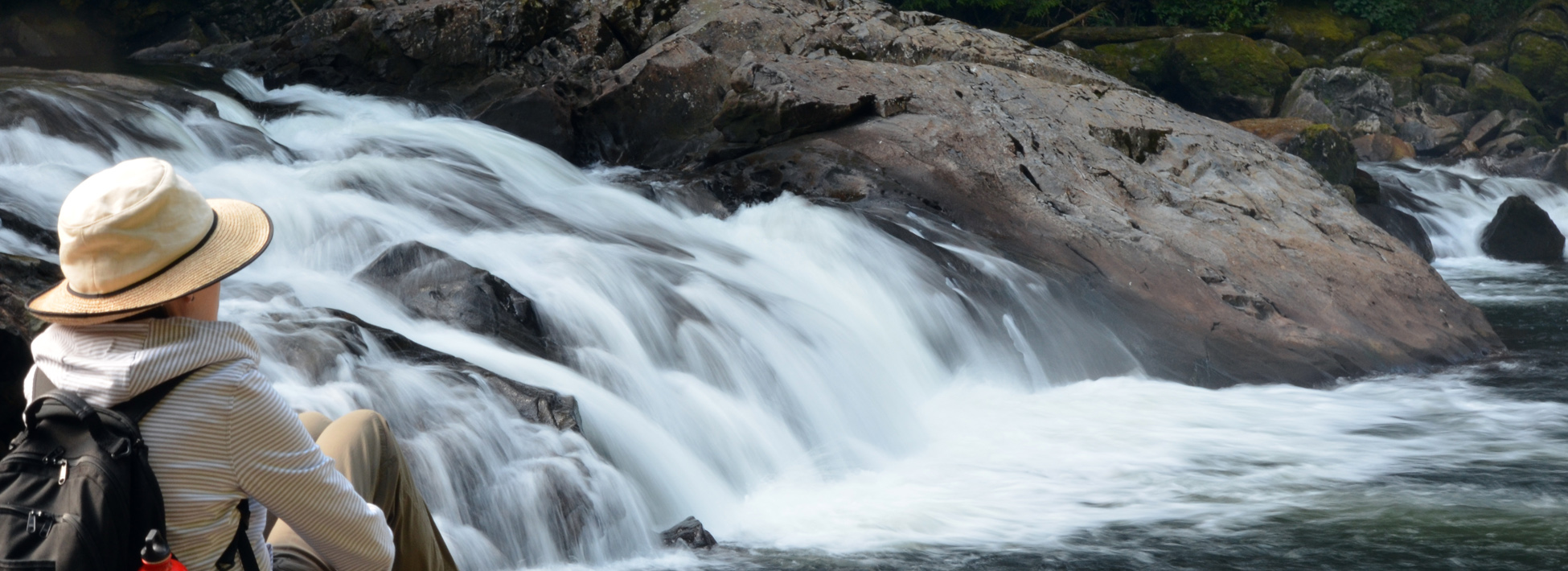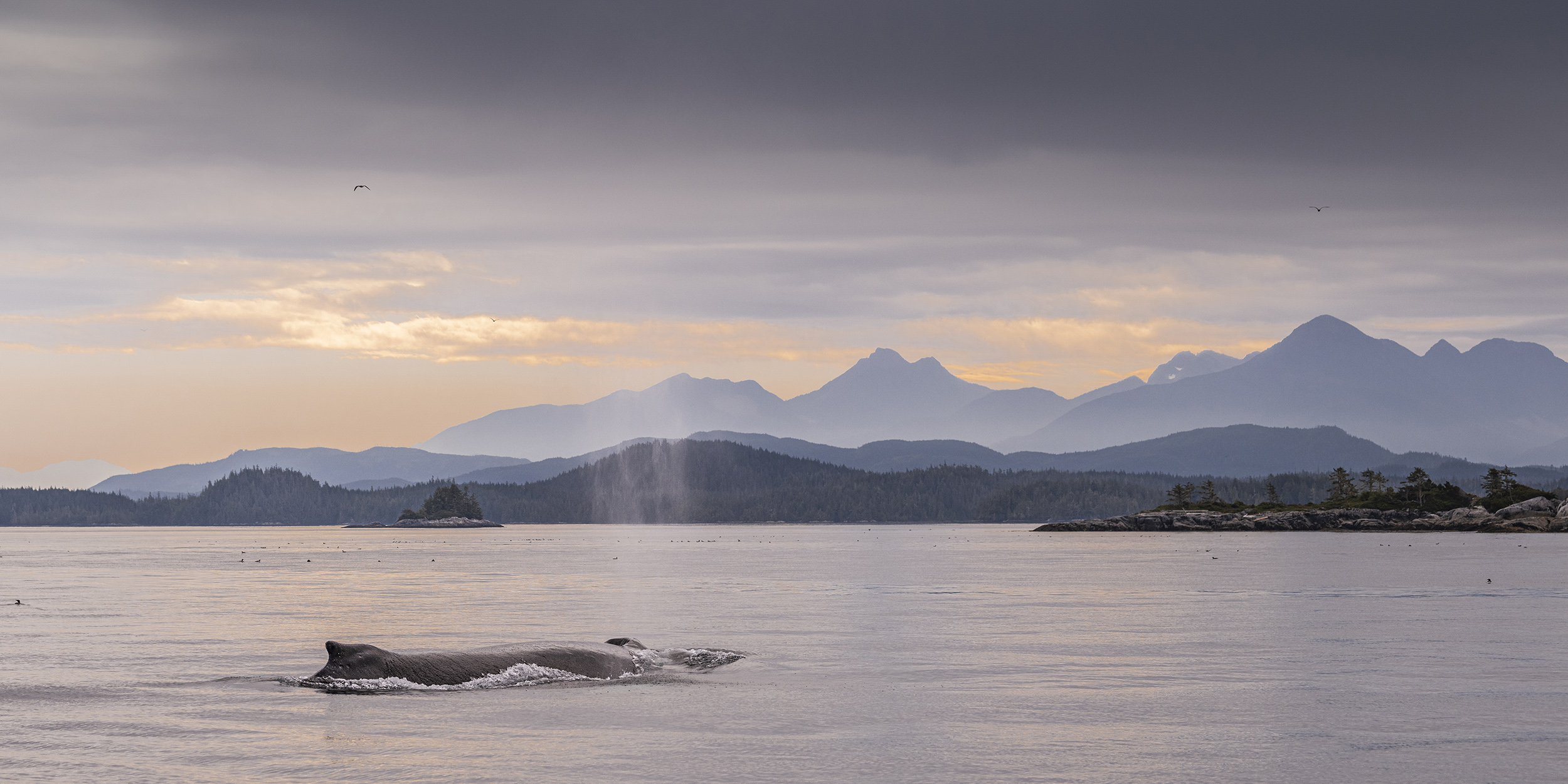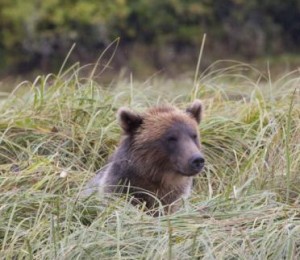No this is not a cub but rather an adult grizzly bear sitting in sedge grass. The grass in the estuary of Knight Inlet’s Glendale River is better than a meter (3 feet) high. In the spring bears come to this area to feed on the sedge grass is it up to 25% protein and as the berries in the coastal forests are not yet available this is the reason why grizzly bears are in the estuary. At lower tides when more of the beach is exposed the bears will spent more time turning over rocks in the inter-tidal zone looking for food high in protein such as crab, clams, barnacles, amphipods and other tiny invertebrates. Much a grizzly’s time in the spring is spent in search of food this changes in the fall once the salmon arrive and food is more abundant. Photo by guest Debbie Zygmunt.
Bald Eagles

Bald Eagles are frequently sighted in our area. At times they can be seen in large numbers. This is usually where food supplies are high. For example this could be in areas with high concentrations of baitfish or along the rivers in the fall when the salmon are spawning. They are not migratory, but do move around with the food supply. As mentioned earlier when the salmon are spawning we often see many along the rivers, while there will be fewer along the coastline. With little need for camouflage their white head and tail feathers can be spotted easily. The female is slightly larger and her white head extends down a bit farther onto the body, but it is subtle. It takes these birds 4.5 – 5 years to acquire this unique plumage. As juveniles they are a brown colour. With exceptional eyesight and the ability to view 270 degrees they are understandably often seen in high perches and in trees near points and passageways.
Visit our Blog